Jam-Making 101: How to Select the Best Fruit
The best fruit for jam isn't always the ripest.
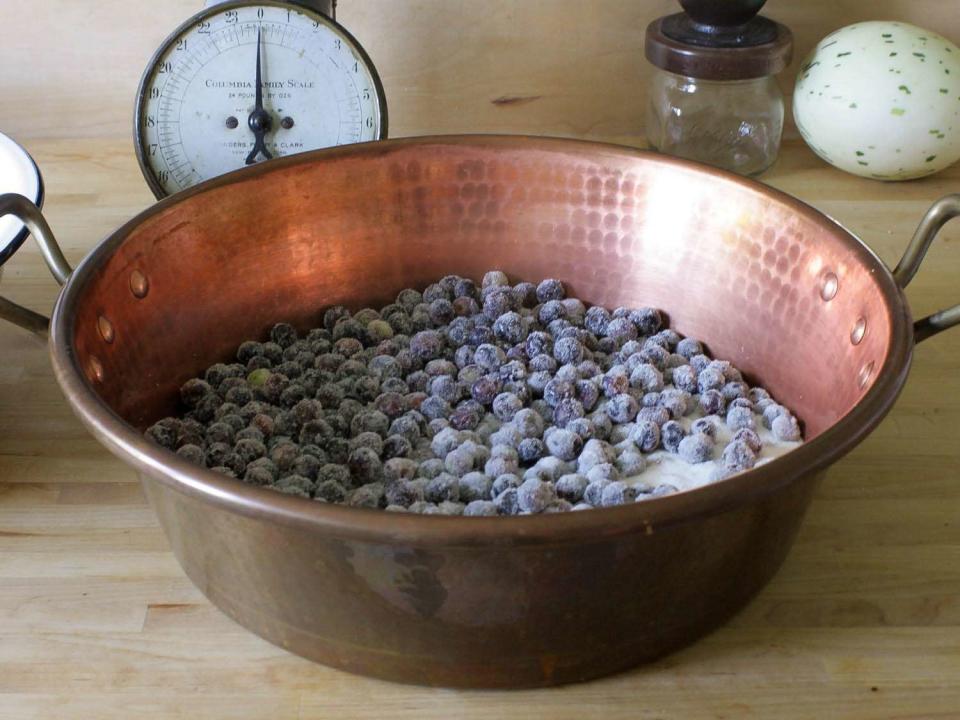
Serious Eats / Jennifer Latham
When summertime rolls around, I can barely keep up with the bounty of fruit. If I had it my way, I'd stand by my backyard apricot tree or the irresistible cherries at the farmers market and just eat my fill. But what about all the fruit I can't devour on the spot? Enter: jam. The magic of jam is that you can bottle up all that great summer fruit and then, right around the holidays, open up a half-pint and enjoy it on toast.
A lot of the time, though, I don't plan ahead for a jam. The inspiration comes from finding the fruit first, whether it's a crop of wild plums from the neighbor or strawberries that are peaking at the market. I have an apricot tree in my yard, and come late June I eat one almost daily, and when they strike that balance of perfect ripeness for jamming, I clear my calendar to make a batch.
But what exactly does it mean for fruit to be perfectly ripe for jam-making? Let's take blueberry jam as an example, which I made last year after lucking into a killer batch of blueberries at the farmers market. I had actually been hoping to make a blueberry pie, but had balked when I saw the price of a pint. Before giving up and heading home empty-handed, I asked the vendor if he offered bulk pricing for pie amounts. He lit up a little (a kindred pie-soul?), and pulled a gallon-sized zip-lock bag full of berries out from under his table. He said they were the "b-sides," berries that weren't quite the greatest hits but would be great for pie-making. He sold them to me for just a dollar more than the price of a pint.
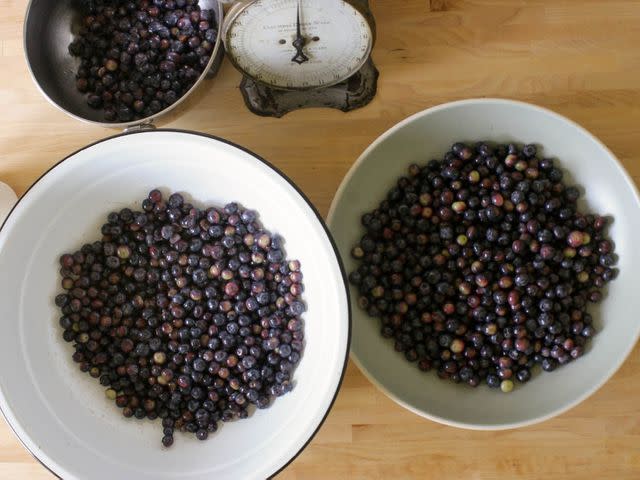
Serious Eats / Jennifer Latham
The bag contained five pounds of blueberries, not huge and globular and even-colored and begging to be popped into your mouth by the handful. Instead, these were small and a mix of both intensely sweet and tart berries, a rainbow in the indigo-to-fuschia spectrum. After I sorted out the few that were too soft or wrinkled, I had well over three pounds of what I then realized were the perfect jamming berries.
""While most of the fruit for jam-making should be at the peak of ripeness, the best should be something of a mixed bag.""
While most of the fruit for jam-making should be at the peak of ripeness, the best should be something of a mixed bag. It's far better to have some slightly under-ripe fruit than overripe fruit, because once it goes even a little past its prime, it quickly starts to lose the pectin and acidity that are essential for good jam, while also producing overcooked flavors and a leathery texture.
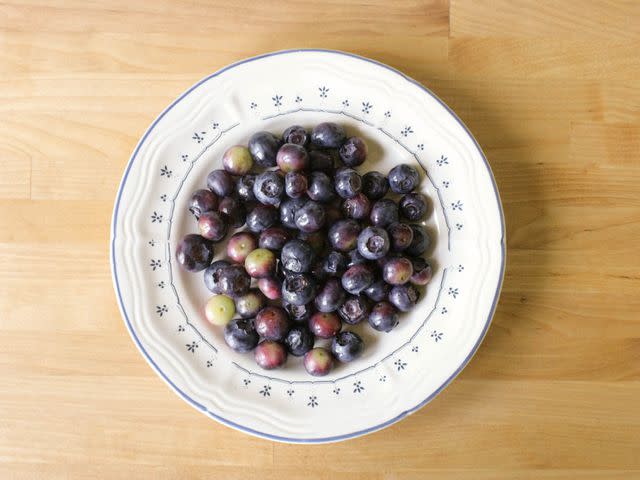
Serious Eats / Jennifer Latham
For a lot of fruit, especially berries, it is best if some of the berries are a little under-ripe, as the greener parts contain lots of pectin, acid, and tannin—qualities that will help the jam form a good, jellied texture and taste more complex. Once everything is cooked together, you won't notice the under-ripe berries, since their flavors will blend with the riper berries and balance out.
Fruit should also be jammed as soon as possible after being harvested—again, you're trying to harness those peak flavors that fade quickly.
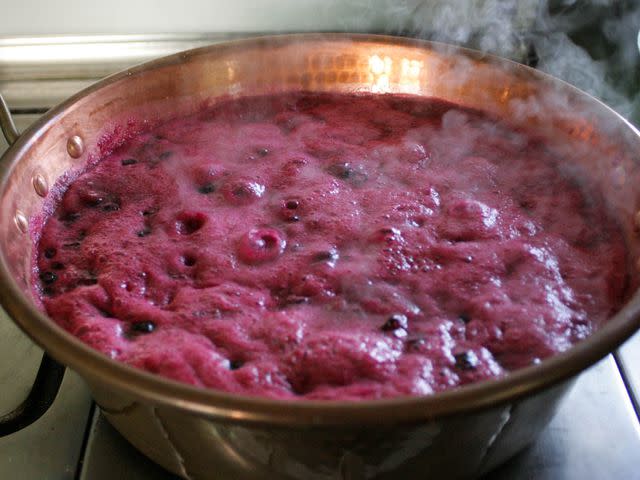
Serious Eats / Jennifer Latham
No two batches of jam are going to be exactly alike—which, for me, is part of the joy of it. Berries from the same bush will vary a little bit from week to week, depending on the weather. And jam made following the exact same recipe will be completely different depending on the specific variety of blueberry or other fruit you're using, and whether it was sunny or foggy the week before it was harvested.
The secret to a great jam is reading your fruit and making adjustments to the sugar and lemon juice amounts based on how fresh and firm your fruit is and how much natural pectin it therefore contains. Generally speaking, just-ripe fruits with lots of pectin will require less sugar than very ripe fruits with less pectin (so, counter-intuitively, you often have to add more sugar to the sweeter, riper fruit to make a good jam out of it, and then will have to add more lemon juice to balance all that extra sweetness out). More tender berries, like raspberries, meanwhile, will usually require much more sugar than very firm fruit like small, hard plums.
Figuring out how to judge fruit takes some practice, but thankfully even merely good jams are still good jams. As you experiment, remember that there's always a way to use every batch, even if it didn't come out exactly as expected: runny jams make great ice cream toppings, and too-firm jams can be paddled into buttercream frosting for cake, or melted down and used as a glaze for roasted or grilled meats.
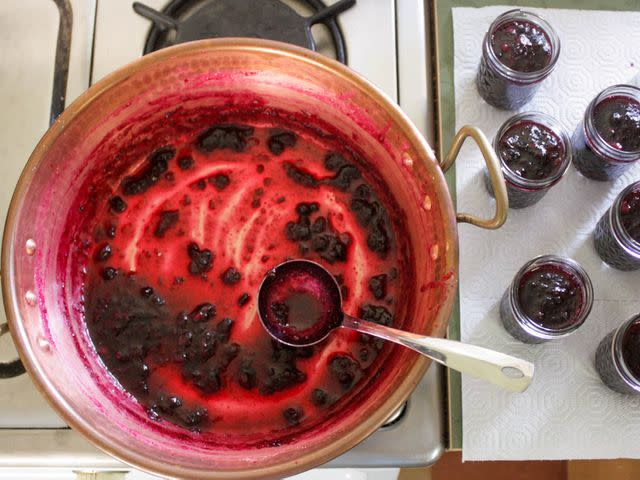
Serious Eats / Jennifer Latham
I went back to the market a few weeks ago and made a beeline for the same blueberry stand where I had scored last year. The farmer's young daughter was there helping, and when I asked her whether she had a big bag of b-side berries, her eyes brightened and she reached under the table.
Get Recipe: Summer Blueberry Jam
July 2014
Read the original article on Serious Eats.

